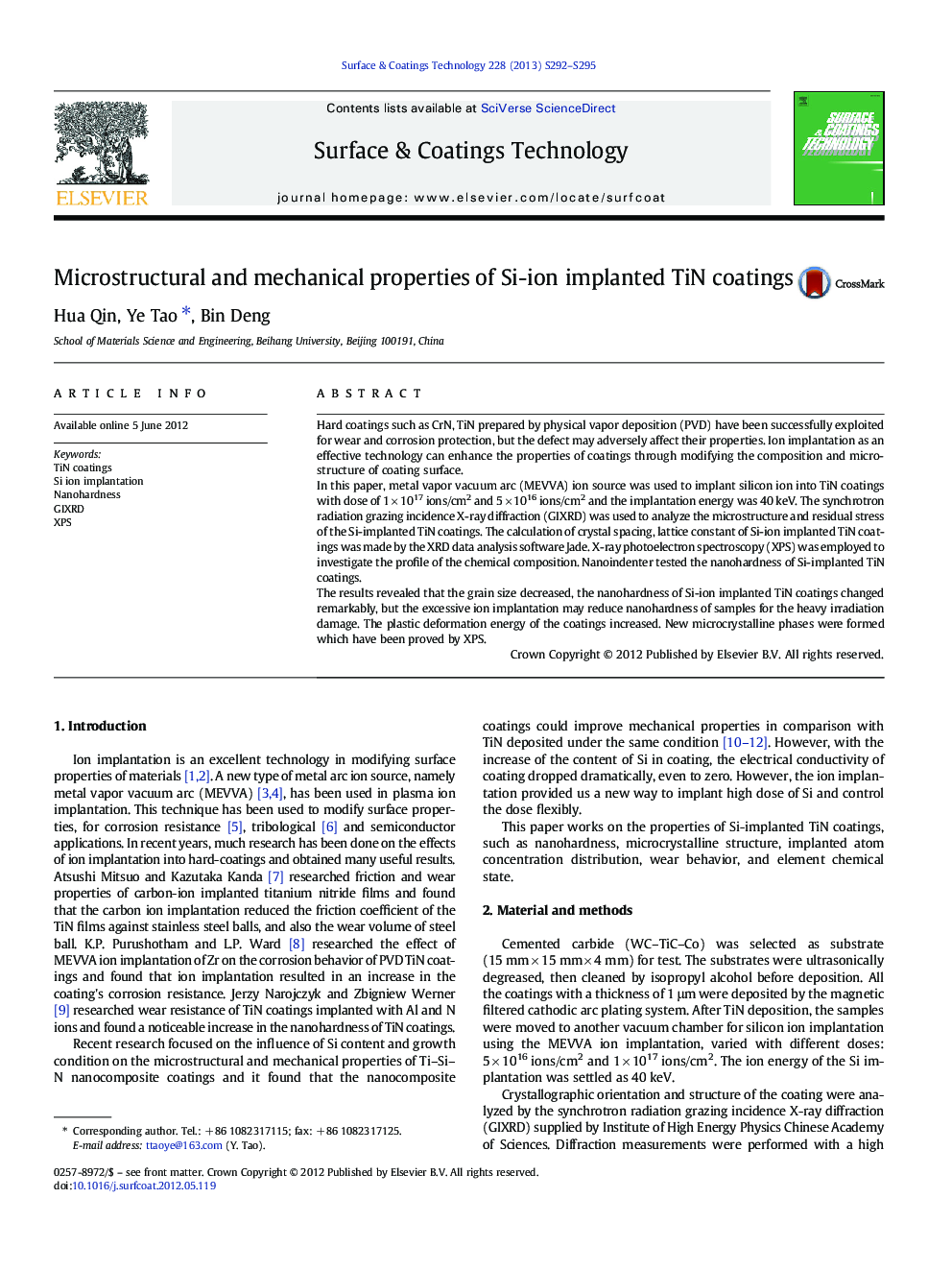| Article ID | Journal | Published Year | Pages | File Type |
|---|---|---|---|---|
| 1657845 | Surface and Coatings Technology | 2013 | 4 Pages |
Hard coatings such as CrN, TiN prepared by physical vapor deposition (PVD) have been successfully exploited for wear and corrosion protection, but the defect may adversely affect their properties. Ion implantation as an effective technology can enhance the properties of coatings through modifying the composition and microstructure of coating surface.In this paper, metal vapor vacuum arc (MEVVA) ion source was used to implant silicon ion into TiN coatings with dose of 1 × 1017 ions/cm2 and 5 × 1016 ions/cm2 and the implantation energy was 40 keV. The synchrotron radiation grazing incidence X-ray diffraction (GIXRD) was used to analyze the microstructure and residual stress of the Si-implanted TiN coatings. The calculation of crystal spacing, lattice constant of Si-ion implanted TiN coatings was made by the XRD data analysis software Jade. X-ray photoelectron spectroscopy (XPS) was employed to investigate the profile of the chemical composition. Nanoindenter tested the nanohardness of Si-implanted TiN coatings.The results revealed that the grain size decreased, the nanohardness of Si-ion implanted TiN coatings changed remarkably, but the excessive ion implantation may reduce nanohardness of samples for the heavy irradiation damage. The plastic deformation energy of the coatings increased. New microcrystalline phases were formed which have been proved by XPS.
► Silicon ion was implanted into TiN coatings. ► The nanohardness of all coatings increased dramatically after Si-implantation in TiN coatings. ► GIXRD indicates that the preferred orientation of the (200) planes of TiN coatings is made by MFCAP. ► XPS shows the formation of Si3N4 within the implantation matrix of the TiN coatings.
